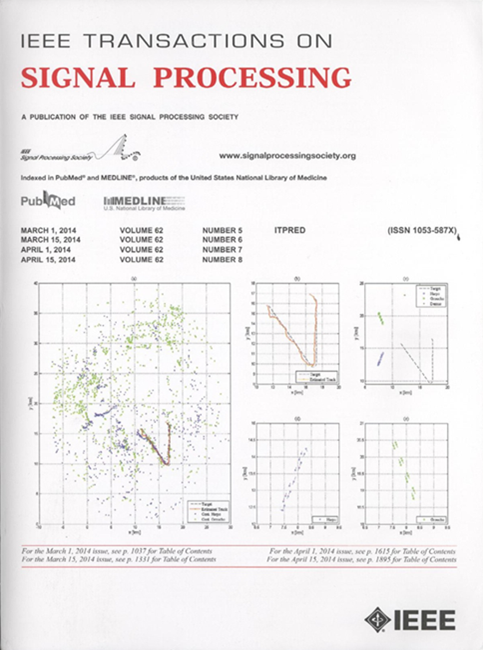MIMO DFRC 系统的波形设计:更精细的传感和更安全的通信
IF 4.6
2区 工程技术
Q1 ENGINEERING, ELECTRICAL & ELECTRONIC
引用次数: 0
摘要
本文探讨了多输入多输出(MIMO)双功能雷达通信(DFRC)系统的恒包络波形设计。其目的是通过最小化多信号分类(MUSIC)算法的渐近估计误差边界来提高该算法的角度估计性能。为了保证通信性能,我们对合成通信信号实施了能量约束和基于余弦相似性的约束。此外,我们还将向每个潜在窃听者传输的能量限制在较低水平,以防止波形被截获。为了解决所遇到的非凸优化问题,我们开发了两种迭代算法。第一种算法基于最小化-最大化方法,我们构建了一个二次代用值来最小化近似目标函数。然后,我们使用交替方向乘法(ADMM)来解决二次编程问题。在第二种算法中,我们直接用 ADMM 方法解决波形设计问题。数值实例表明,通过精心设计波形,MIMO DFRC 系统能够同时实现高性能的目标定位和隐蔽通信。本文章由计算机程序翻译,如有差异,请以英文原文为准。
Waveform Design for MIMO DFRC Systems: Finer Sensing and Safer Communications
This paper considers the design of constant-envelope waveforms for multiple-input-multiple-output (MIMO) dual-function radar communication (DFRC) systems. The purpose is to improve the angle estimation performance of the multiple signal classification (MUSIC) algorithm through minimizing its asymptotic estimation error bound. To guarantee the communication performance, we enforce an energy constraint as well as a cosine similarity-based constraint on the synthesized communication signals. Additionally, we constrain the energy transmitted toward each potential eavesdropper to a low level, which prevents the waveforms from being intercepted. To tackle the encountered non-convex optimization problem, we develop two iterative algorithms. The first algorithm is based on the minorization-maximization method, wherein we construct a quadratic surrogate to minorize the approximate objective function. Then we use the alternating direction method of multipliers (ADMM) to tackle the quadratic programming problem. In the second algorithm, we directly tackle the waveform design problem by the ADMM method. Numerical examples are provided to show that through elaborate waveform design, the MIMO DFRC system is capable to realize high-performance target localization and covert communications simultaneously.
求助全文
通过发布文献求助,成功后即可免费获取论文全文。
去求助
来源期刊

IEEE Transactions on Signal Processing
工程技术-工程:电子与电气
CiteScore
11.20
自引率
9.30%
发文量
310
审稿时长
3.0 months
期刊介绍:
The IEEE Transactions on Signal Processing covers novel theory, algorithms, performance analyses and applications of techniques for the processing, understanding, learning, retrieval, mining, and extraction of information from signals. The term “signal” includes, among others, audio, video, speech, image, communication, geophysical, sonar, radar, medical and musical signals. Examples of topics of interest include, but are not limited to, information processing and the theory and application of filtering, coding, transmitting, estimating, detecting, analyzing, recognizing, synthesizing, recording, and reproducing signals.
 求助内容:
求助内容: 应助结果提醒方式:
应助结果提醒方式:


